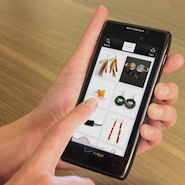- About
- Subscribe Now
- New York,
January 12, 2016

 Mobile commerce is rapidly changing, offering consumers widespread choices on how to shop
Mobile commerce is rapidly changing, offering consumers widespread choices on how to shop
Smartphones are now the leading mobile driver of both sales and traffic compared to tablets, but conversion rates and high development costs are leaving retailers in the dark, according to a new report from Forrester and Shop.org.
Mobile traffic has been a continual driver for commerce, causing retailers to search for greater means of streamlining conversion but costly development measures and low return-on-investment rates have slowed down advancement. A large portion of retailers have seen growth in mobile conversion, with 65 percent claiming increases but 59 percent of retailers are still seeing rates under three percent.
“Mobile commerce continues to be a priority for retailers,” said Artemis Berry, vice president at Shop.org. “We are seeing rapid growth in mobile traffic and retailers are anxious to drive more sales through mobile devices.
“A larger percentage of retailers are reporting flat year-over-year sales than in years past,” she said. “While this should not be a surprise, as all things online retail continue to mature, there is a lot of opportunities for retailers to regain and further grow those sales as we think about mobile conversion and the future influence of stores, and optimizing that shopping experience.
“It is not easy to do, but it is a mobile-first world.”
Mobile drives sales
Consumers are spending the majority of time on mobile devices, and smartphones are becoming a huge driver in mobile sales, even surpassing tablets. Smartphones now make up 17 percent of online sales, and tablets have slipped below with only 14 percent.
Smartphones are making up a substantial amount of retail traffic as well, with 23 percent of average online traffic coming from the smaller devices and tablets at only 15 percent.
But for retailers trying to further capitalize on mobile, it is proving to be difficult with the need to streamline checkout, interface and streamline capability growing but IT costs on the rise. In 2013 retailers spent an average of about five percent of online revenue on IT, but now spend about nine percent.
More retailers are proving to be developing in-house for mobile, but many are also leveraging a third-party expert to do so, with 46 percent using an outside company for mobile development.
Mobile capability
While there may be pitfalls, retailers are still fully aware of the capability that mobile holds with 59 percent claiming the technology is a top priority for the upcoming year. Mobile as a whole is making up 31 percent of total online sales.
Many retailers are taking a back seat when it comes to developing applications, with only 14 percent of all merchants having an app.
“Digital retail is still a star in the show,” Ms. Berry said. “But, slower growth and fierce competition means retailers need to work harder than ever to attract new customers, retain old ones and continue to revolutionize the experience.
“Retailers have the opportunity to drive customer loyalty via assortment breadth, optimize fulfillment expenses, which is key as consumers want products faster than ever and influence store sales through mobile devices,” she said. “Mobile is already a part of the shopping experience in store.
“Make sure you have a strong strategy for this if you have physical stores.”
Share your thoughts. Click here